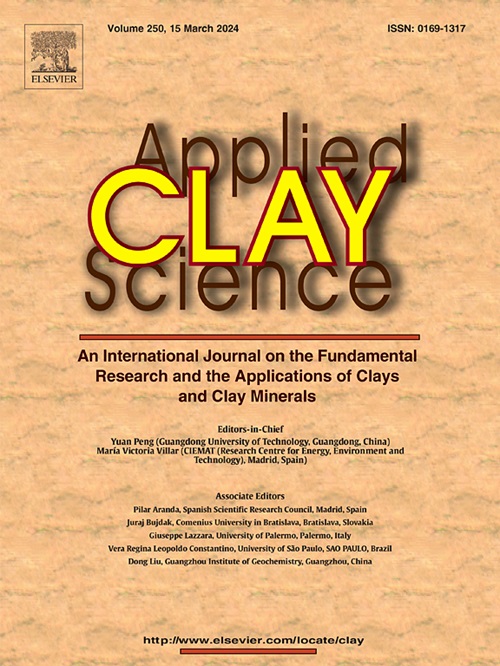A novel protocol for detection and quantification of SARS-CoV-2 virus based on settlement rates of clay-virus-electrolyte mixture
IF 5.3
2区 地球科学
Q2 CHEMISTRY, PHYSICAL
引用次数: 0
Abstract
Detection and quantification of a virus play a crucial role in diagnosis, determination of infection stage, and decision on treatment strategies. Further, it plays a crucial role in monitoring the disease propagation during the pandemic. A wide range of analytical methods are used to detect and quantify viruses. The currently available methods are, however, laborious, costly, and time-consuming. Also, the accuracy of many of these methods is debatable. We propose a novel method for the detection and quantification of coronavirus based on the clay–virus–electrolyte interaction using the sedimentation method. Newcastle disease virus (NDV), a Coronavirus surrogate (CS), and Infectious bronchitis virus (IBV), an avian coronavirus, were used in this study. Due to changes in inter-particle forces of clay in the presence of the virus, the sedimentation rate of the clay-electrolyte system changed. A protocol was thus developed based on the changes in the sedimentation rate to predict the presence and quantity of the given virus. The sedimentation rates were recorded by mixing the bentonite clay with the CS or IBV and 0.1 M NaCl electrolyte solution at a solid-to-liquid ratio of 1:50. The sedimentation rates were varied with different CS concentrations due to different particle-particle associations due to the sorption of virus particles on the clay surface. The proposed method was successfully validated for using the plaque assay techniques for CS virus and RT-PCR for the IBV. The proposed method is simple, cost-effective, and very useful for the detection of coronavirus and other viruses' presence and quantification. Moreover, the methodology is useful to diagnose the Newcastle disease virus (NDV), which causes infection among several avian species during avian outbreaks.
求助全文
约1分钟内获得全文
求助全文
来源期刊

Applied Clay Science
地学-矿物学
CiteScore
10.30
自引率
10.70%
发文量
289
审稿时长
39 days
期刊介绍:
Applied Clay Science aims to be an international journal attracting high quality scientific papers on clays and clay minerals, including research papers, reviews, and technical notes. The journal covers typical subjects of Fundamental and Applied Clay Science such as:
• Synthesis and purification
• Structural, crystallographic and mineralogical properties of clays and clay minerals
• Thermal properties of clays and clay minerals
• Physico-chemical properties including i) surface and interface properties; ii) thermodynamic properties; iii) mechanical properties
• Interaction with water, with polar and apolar molecules
• Colloidal properties and rheology
• Adsorption, Intercalation, Ionic exchange
• Genesis and deposits of clay minerals
• Geology and geochemistry of clays
• Modification of clays and clay minerals properties by thermal and physical treatments
• Modification by chemical treatments with organic and inorganic molecules(organoclays, pillared clays)
• Modification by biological microorganisms. etc...
 求助内容:
求助内容: 应助结果提醒方式:
应助结果提醒方式:


